Bill Gates College Tour: Billionaire Encourages Students To Teach
Contributor
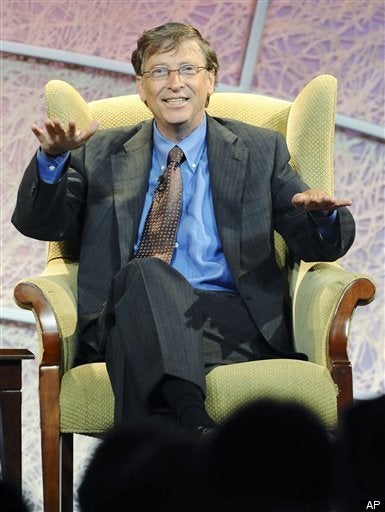
On Monday, recently retired Microsoft Chair Bill Gates embarked on a three-state college tour. Gates kicked off his trip at the University of California-Berkeley, where he spoke on the necessity of youth involvement in crucial issues facing the world.
CNET has more:
The philanthropist and Microsoft chairman said he would like to see some of this [young] brain power shifted to issues like education. College students, with their youth and open minds, represent an important opportunity to get more people working on these issues, Gates said. Too many, he said, are going into entertainment and other areas. Even those going to science, he noted, are often working on problems such as developing a cure for baldness.
At MIT, Gates revered students going into public service, especially teaching.
The Boston Herald reports:
Gates hailed the 96 recent MIT graduates who joined Teach for America, a national nonprofit that recruits outstanding college graduates to teach for two years in urban and rural public schools. "Every one of those kids who chose the program would have had other opportunities that would have been far more lucrative," Gates said. He praised KIPP, one of the largest charter school networks which has a longer school day and longer school year. But he criticized teacher unions without naming them, saying they stand in the way of school reform.
Other schools on Gates's tour roster include Stanford, Harvard and University of Chicago.

Support HuffPost
Our 2024 coverage needs you, your loyalty means the world to us.
At HuffPost, we believe that everyone needs high-quality journalism, but we understand that not everyone can afford to pay for expensive news subscriptions. That is why we are committed to providing deeply reported, carefully fact-checked news that is freely accessible to everyone.
Whether you come to HuffPost for updates on the 2024 presidential race, hard-hitting investigations into critical issues facing our country today, or trending stories that make you laugh, we appreciate you. The truth is, news costs money to produce, and we are proud that we have never put our stories behind an expensive paywall.
Would you join us to help keep our stories free for all? Your contribution of as little as $2 will go a long way.
As Americans head to the polls in 2024, the very future of our country is at stake. At HuffPost, we believe that a free press is critical to creating well-informed voters. That's why our journalism is free for everyone, even though other newsrooms retreat behind expensive paywalls.
Our journalists will continue to cover the twists and turns during this historic presidential election. With your help, we'll bring you hard-hitting investigations, well-researched analysis and timely takes you can't find elsewhere. Reporting in this current political climate is a responsibility we do not take lightly, and we thank you for your support.
Contribute as little as $2 to keep our news free for all.
Dear HuffPost Reader
Thank you for your past contribution to HuffPost. We are sincerely grateful for readers like you who help us ensure that we can keep our journalism free for everyone.
The stakes are high this year, and our 2024 coverage could use continued support. Would you consider becoming a regular HuffPost contributor?
The stakes are high this year, and our 2024 coverage could use continued support. If circumstances have changed since you last contributed, we hope you’ll consider contributing to HuffPost once more.
Already contributed? Log in to hide these messages.
Popular in the Community
From our partner, more in college.
Bill Gates kicks off college tour
Speaking at the University of California at Berkeley, the philanthropist and Microsoft chairman encourages students to get involved in society's big issues.
BERKELEY, Calif.--While the world faces enormous challenges feeding its populations, developing clean energy, and fighting diseases, many of its best and brightest citizens are focused on other issues.
That notion was reinforced for Bill Gates several weeks back as he sat with several friends who were engaged in a passionate discussion on two key topics: March Madness and the reforms being debated for Wall Street.
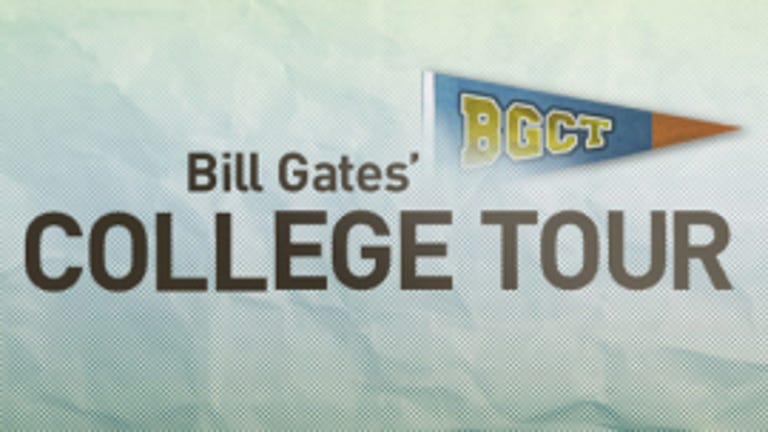
The philanthropist and Microsoft chairman said he would like to see some of this brain power shifted to issues like education.
"How possible is it that we could be having this same intense conversation about how to make a teacher better," Gates said Monday during a talk at the University of California at Berkeley, kicking off a three-state college tour. "Are the brightest minds working on the hardest problems? I think the answer is probably not."
College students, with their youth and open minds, represent an important opportunity to get more people working on these issues, Gates said. Too many, he said are going into entertainment and other areas. Even those going to science, he noted, are often working on problems such as developing a cure for baldness.
"I'm not saying they should be banned," he said, noting that he is a big movie buff. Even curing baldness has its place. "I know people would be more fun to look at if they had a baldness drug."

But, shifting to the meat of his talk, Gates showed a single slide, the rate of decline in childhood deaths that came about from the advent of key vaccines. What's needed, he said is more vaccines and broader distribution of those that already exist.
Once you improve health conditions, Gates said, education is the next key, noting that economic success follows. However, even in the United States, he said, education is not keeping pace.
Of course, Gates noted that he never finished college. "I dropped out of school myself," he quipped. "I promised my dad I'd go back. I'm working that debt off one day at a time."
Following his speech, Gates has some private meetings with students and faculty before heading to a speech later in the day at Stanford University. On Tuesday, he'll travel to the University of Chicago, and on Wednesday he'll speak at Harvard University and the Massachusetts Institute of Technology. CNET will be covering the San Francisco Bay Area and Boston area legs of the tour, including some of the behind-the-scenes action, and speaking to Gates himself.
Update 11:57 a.m. PDT: In the question-and-answer session, Gates was asked how a student who is graduating now and has a bunch of debt and no job can really help with these issues.
Gates said that although he knows it is a tough time for students, there are lots of jobs in the nonprofit sector, though they might not be the best-paying ones. He pointed to the U.S. Agency for International Development (USAID) as one example.
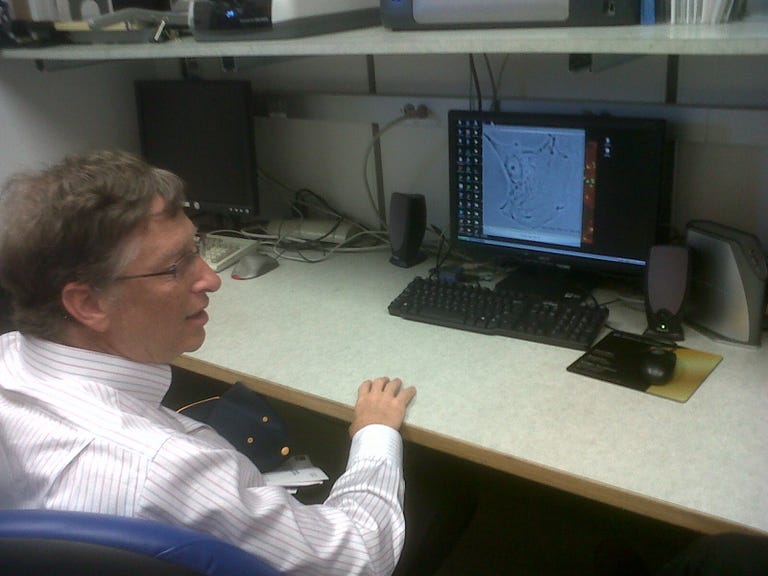
"USAID has such a need for expertise and they have tons of open positions," he said. "It's certainly a great example."
Those graduating might also be in a position to really immerse themselves in global issues by living and working in a poorer country.
"Is it a time where you could go off to one of these developing countries?" he said.
Gates was also quizzed about his thoughts on genetically modified crops. Gates recommended a book (which I will get a link for), but said that improving resistance to things like drought is important.
"I have a bias, but the book I am recommending is less biased than I am," he said.
And despite his love of technology, Gates said getting PCs to the world's poor is actually pretty low on his priority list.
"You don't need personal-computer connectivity to deal with childhood deaths," he said, though he noted that cell phones, which are more prevalent in developing countries actually can play a big role.
Cell phones can also establish identity, which can help with financial systems, Gates said, noting a project in Kenya that uses phones as a means for banking, bringing savings to those who never had a means to safely do so.
"Poor people don't have saving accounts," he said. "The financial system doesn't work for the poor."
Continuing Coverage
Bill Gates Kicks Off College Tour in Bay Area
Former microsoft ceo wants to urge young people to solve all the world's problems, by jackson west • published april 20, 2010 • updated on april 20, 2010 at 3:00 pm.
Multi-billionaire Bill Gates has come out of his underground lair across the lake from Seattle to go on a three-city speaking swing focused at college students. Monday he kicked off the tour with appearances at the University of California, Berkeley and at Stanford University .
His idea is to inspire bright young people to think about solving the real problems the world is facing, and maybe not go chasing after the wild riches they'll need to pay off their student loans. The focus of the talks were about the work the Bill and Melinda Gates Foundation is doing to help make healthcare more equitable between the developed and developing world, especially through access to family planning and inexpensive vaccines. He only showed a single slide to the audience at Cal, which revealed that while the worldwide child mortality rate has decreased significantly since 1960 , nearly nine million still die young every year. He also took some time to talk to reporters while in town, and managed to get a passive-aggressive comment in about Steve Jobs and Apple , calling the iPad "okay" but praising its aesthetic qualities. Gates will be in Chicago Tuesday, followed by Boston on Wednesday. Jackson West will disclose that Microsoft stock options helped his family pay most of his way through college.
The portion of the world’s economy that doesn’t fit the old model just keeps getting larger.
College Tours
At Microsoft, I periodically visited college campuses to talk with students about applying science and technology to drive new waves of innovation.
I’m pretty excited because next week I’ll be traveling to five different universities in the United States for a chance to talk with students. I’ve done college tours before when I was full time at Microsoft. This will be the first time I’ve visited different campuses as part of my work at our foundation.
It will be a busy week. I’ll be giving a talk followed by a Q&A session with students at UC Berkeley, Stanford, University of Chicago, Harvard, and MIT from April 19- 21. I’ll also be spending time at each school meeting with students and faculty to learn about innovative work they’re doing in their various programs.
I’m most looking forward to my conversation with students about how we can get more of the world’s brightest people to focus on the world’s biggest challenges, like poverty, global health, education, energy and climate change.
Unlike my past college tours, you’ll be able to watch and participate in the tour even if you can’t be there in person. From the Gates Notes and other web locations you’ll be able to watch live webcasts of the talks at UC Berkeley and Harvard via Ustream. The talks will also simulcast live on TechCrunch (UC Berkeley, 4/19) and Mashable (Harvard, 4/21). I’ll tweet more details about the live webcasts next week and will be active on Twitter throughout the tour via @BillGates. You can also learn more by checking out the college tour section of the foundation’s Facebook page.
I’m excited to have the students share their ideas and have others join in the conversation.
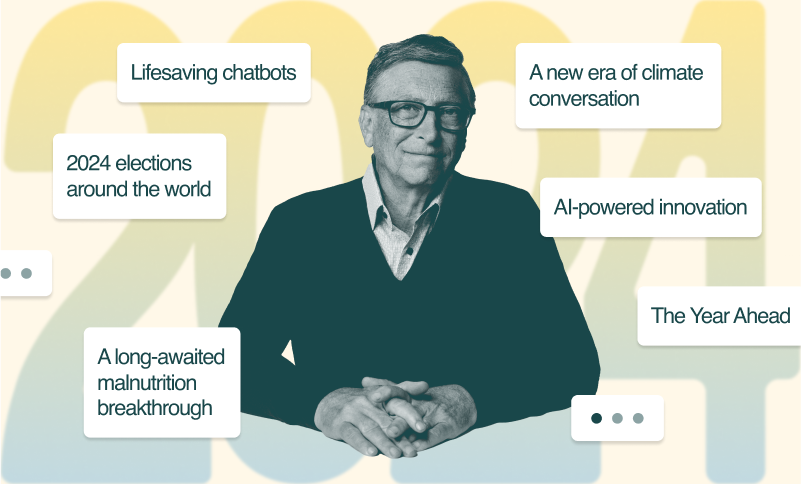
This year signaled the start of a new era. Here’s why I believe next year is an opportunity to shape the world’s next chapter for the better.
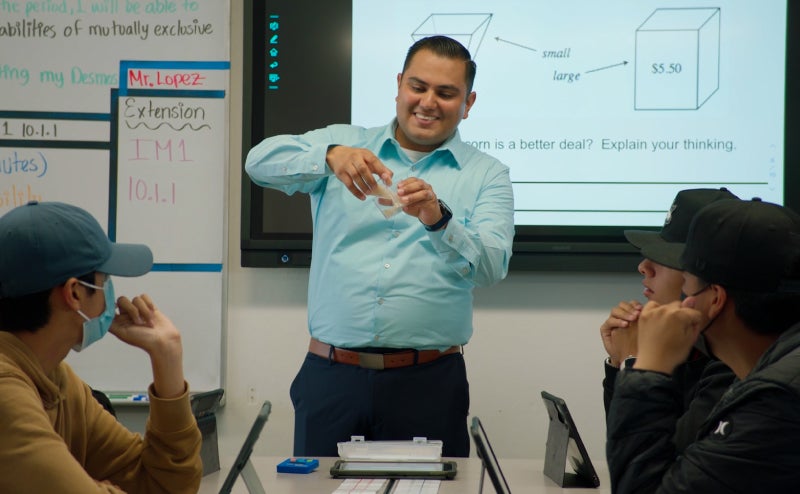
It’s part of a new approach to teaching America’s least favorite subject.

In the second episode of my new podcast, I sat down with the founder of Khan Academy to talk about how artificial intelligence will transform education.

Washington State Teacher of the Year Dana Miles uses bus schedules, coffee orders, and dinner recipes to teach her students about self-advocacy.
This is my personal blog, where I share about the people I meet, the books I'm reading, and what I'm learning. I hope that you'll join the conversation.

Q. How do I create a Gates Notes account?
A. there are three ways you can create a gates notes account:.
- Sign up with Facebook. We’ll never post to your Facebook account without your permission.
- Sign up with Twitter. We’ll never post to your Twitter account without your permission.
- Sign up with your email. Enter your email address during sign up. We’ll email you a link for verification.
Q. Will you ever post to my Facebook or Twitter accounts without my permission?
A. no, never., q. how do i sign up to receive email communications from my gates notes account, a. in account settings, click the toggle switch next to “send me updates from bill gates.”, q. how will you use the interests i select in account settings, a. we will use them to choose the suggested reads that appear on your profile page..
Suggestions or feedback?
MIT News | Massachusetts Institute of Technology
- Machine learning
- Social justice
- Black holes
- Classes and programs
Departments
- Aeronautics and Astronautics
- Brain and Cognitive Sciences
- Architecture
- Political Science
- Mechanical Engineering
Centers, Labs, & Programs
- Abdul Latif Jameel Poverty Action Lab (J-PAL)
- Picower Institute for Learning and Memory
- Lincoln Laboratory
- School of Architecture + Planning
- School of Engineering
- School of Humanities, Arts, and Social Sciences
- Sloan School of Management
- School of Science
- MIT Schwarzman College of Computing
Bill Gates visits MIT
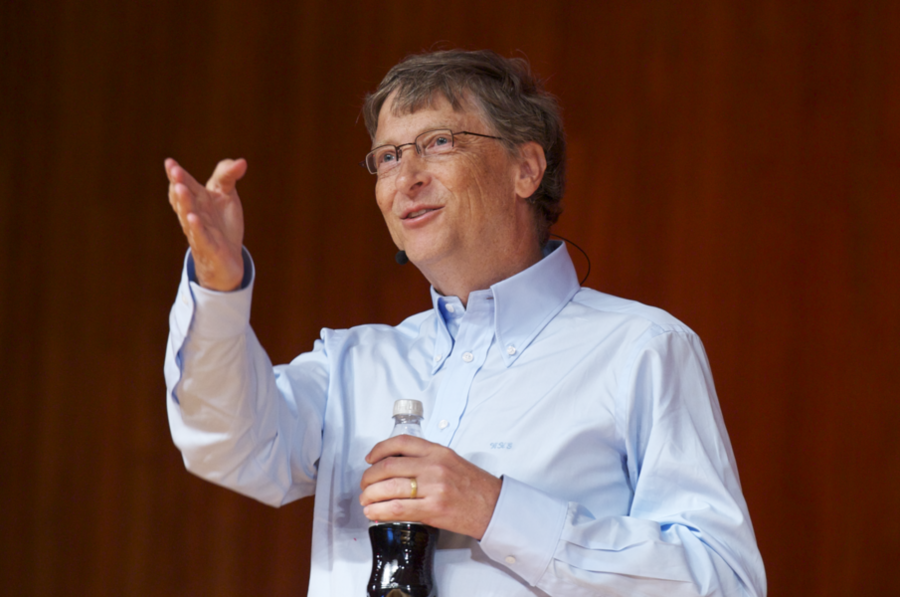
Previous image Next image
Share this news article on:
Related links.
- Archived webcast of Gates' visit
- 3 Questions with Bill Gates
- Bill and Melinda Gates Foundation
- Bill Gates' College Tour on Facebook
- MIT OpenCourseWare
- Video of The Tech's interview with Bill Gates
Related Topics
- Special events and guest speakers
- Technology and society
- Volunteering, outreach, public service
More MIT News
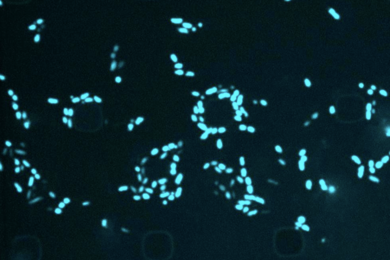
When an antibiotic fails: MIT scientists are using AI to target “sleeper” bacteria
Read full story →
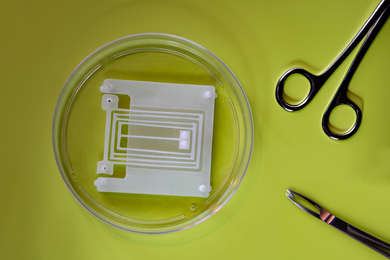
MIT engineers design flexible “skeletons” for soft, muscle-powered robots
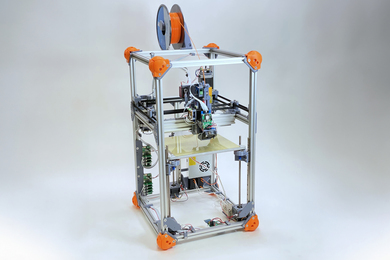
This 3D printer can figure out how to print with an unknown material
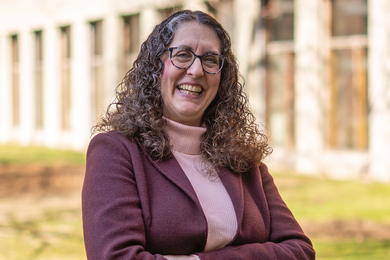
For Julie Greenberg, a career of research, mentoring, and advocacy
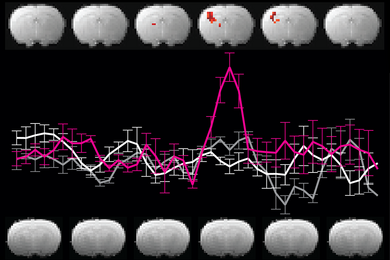
Reevaluating an approach to functional brain imaging

Propelling atomically layered magnets toward green computers
- More news on MIT News homepage →
Massachusetts Institute of Technology 77 Massachusetts Avenue, Cambridge, MA, USA
- Map (opens in new window)
- Events (opens in new window)
- People (opens in new window)
- Careers (opens in new window)
- Accessibility
- Social Media Hub
- MIT on Facebook
- MIT on YouTube
- MIT on Instagram
- Philanthropy News Digest

Bill Gates Calls on College Students to Tackle Challenging Global Issues
Kicking off a three-state tour of five college campuses, Bill Gates encouraged students at the University of California, Berkeley to get involved in efforts that can change the world, CNET reports.
In his talk, the Microsoft chairman and co-founder of the Bill & Melinda Gates Foundation said that, with their youthful idealism and open minds, college students represent an important opportunity to get more people working on the world's most challenging issues, including access to health care and broken school systems. At the same time, said Gates, too many students are going into fields such as entertainment, while even those who go into science usually do not end up working on issues relating to global health.
Gates echoed that sentiment at Stanford University , where he noted that while anti-baldness drugs proliferate in America, there is a lack of vaccines to prevent millions of young children from dying in developing countries. "Are the brightest minds working on the most important problems?" asked Gates. "My view is that we could do a lot better on this, and it would make a huge difference....It's unbelievable how few smart people [are working on global health issues]. You'd be amazed at how little work there is in this area."
During his presentations, America's wealthiest individual showed a single slide depicting the rate of decline in childhood deaths following the advent of key vaccines. What's needed, he said, are more vaccines and broader distribution of those that already exist.
He also gave some advice to those looking to launch a career in philanthropy: Get hands-on experience and commit to it for a while. "When we look at people's resumes [at the Gates Foundation]," he said, "we look to see if there was a long amount of time that they were willing to get their hands dirty and do the work."
Related content

Gates Cambridge Trust announces 2024 Gates Cambridge Scholars
Gateses' annual letter focuses on equity, pandemic preparedness, gateses' 2020 letter looks back on two decades of successes, failures, bill and melinda gates launch lobbying initiative, search news.

The nonprofit news you need
Get the latest nonprofit news, funding opportunities, job openings, and more delivered to your inbox with Philanthropy News Digest newsletters.
Candid gets you the information you need to do good.
To subscribe, select any of the newsletters listed below.
- RFP Bulletin
- Job Bulletin
- PND Connections
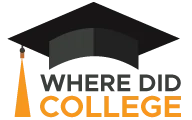

Where Did Bill Gates Go to College? Unravelling the Educational Journey of a Tech Titan
In the annals of modern history, few names shine as brightly as Bill Gates’s. The co-founder of Microsoft, Gates, has left an indelible mark on technology, business, and philanthropy. Yet, amidst the aura of his success, many wonder about the humble beginnings of this tech titan, particularly his educational background. In this blog post, we delve into the question: Where did Bill Gates go to college?
Table of Contents
Early Life and Education
Bill Gates, born William Henry Gates III on October 28, 1955, in Seattle, Washington, exhibited a precocious intellect from an early age. Raised in a supportive family environment, Gates attended Lakeside School, a private preparatory school known for its rigorous academic curriculum.
During his time at Lakeside, Gates discovered his passion for computing, gaining access to a teletype terminal through a Lakeside Mothers’ Club donation. This pivotal moment ignited Gates’s fascination with programming and laid the foundation for his future endeavours in technology.
Where did Bill Gates go to college?
Despite his early interest in technology, Gates initially enrolled at Harvard University in 1973 , intending to pursue a law degree. However, his insatiable curiosity for computers soon led him down a different path. At Harvard, Gates immersed himself in the burgeoning world of computer science, spending countless hours in the university’s computer lab.
During this time, Gates and his childhood friend Paul Allen developed a version of the programming language BASIC for the Altair 8800 microcomputer, marking the genesis of their entrepreneurial journey.
The Birth of Microsoft
In 1975, Gates and Allen founded Microsoft, a company that would revolutionize the personal computing industry. Guided by their vision of a computer on every desk and in every home, Gates dropped out of Harvard in his junior year to focus full-time on building Microsoft.
The decision to leave Harvard was not taken lightly, but Gates recognized the immense potential of the burgeoning software market and seized the opportunity to pursue his entrepreneurial ambitions.
Legacy and Impact
The decision to forego his college education was a defining moment in Gates’s life. Under his leadership, Microsoft flourished, introducing groundbreaking products such as the MS-DOS operating system and the Windows graphical user interface. Gates’s strategic insight and relentless drive propelled Microsoft to unprecedented heights, cementing his status as one of the most influential figures in the tech industry.
Philanthropy and Beyond
In 2008, Gates stepped down from his day-to-day role at Microsoft to focus on philanthropy through the Bill & Melinda Gates Foundation. Committed to addressing global challenges such as poverty, disease, and education, Gates has dedicated his vast wealth and resources to positively impacting the world.
Through initiatives like the Global Polio Eradication Initiative and the Alliance for a Green Revolution in Africa, Gates continues to champion innovative solutions to some of humanity’s most pressing issues.
The Impact of Dropping Out: Exploring the Decision to Leave Harvard
Bill Gates’s decision to drop out of Harvard University in his junior year was a pivotal moment that shaped his trajectory as an entrepreneur. Despite the traditional view that a college degree is essential for success, Gates recognized the unique opportunities in the nascent software industry.
By focusing full-time on building Microsoft, Gates demonstrated a willingness to take calculated risks and pursue his passion, ultimately redefining the notion of success beyond the confines of academia.
Lakeside School: Nurturing a Passion for Technology
Lakeside School was crucial in shaping Bill Gates’s early interest in technology. The supportive environment and access to resources, such as the teletype terminal donated by the Lakeside Mothers’ Club, gave Gates the platform to explore his curiosity and delve into programming at a young age. The experience at Lakeside ignited Gates’s passion for technology and laid the groundwork for his future endeavours in the field.
Microsoft’s Evolution: From Garage Startup to Global Powerhouse
Founded in 1975 by Bill Gates and Paul Allen, Microsoft began as a small startup operating out of a garage in Albuquerque, New Mexico. Armed with a vision of making computers accessible to the masses, Gates and Allen embarked on a journey to develop software to revolutionize the personal computing industry.
From the introduction of MS-DOS to the widespread adoption of Windows, Microsoft’s evolution into a global powerhouse is a testament to Gates’s visionary leadership and relentless pursuit of innovation.
The Gates Foundation: A New Chapter in Philanthropy
In 2008, Bill Gates stepped down from his day-to-day role at Microsoft to focus on philanthropy through the Bill & Melinda Gates Foundation. Committed to addressing global challenges such as poverty, disease, and education, the Gates Foundation has become one of the world’s largest and most influential philanthropic organizations.
Through initiatives like the Global Polio Eradication Initiative and the Grand Challenges Explorations, the Gates Foundation continues to drive positive change and improve the lives of millions worldwide.
Gates’s Educational Philosophy: Lessons Learned from a Tech Icon
While Bill Gates’s decision to drop out of college may seem unconventional, it offers valuable insights into his educational philosophy. Gates believes in the power of self-directed learning, hands-on experience, and continuous growth. His journey underscores the importance of passion, perseverance, and adaptability in navigating the complexities of the modern world.
By embracing a lifelong learning mindset, Gates has demonstrated that education extends far beyond the confines of traditional institutions and degrees.
The Future of Education: Insights from Bill Gates’s Journey
As technology continues to reshape the landscape of education, Bill Gates’s journey offers valuable insights into the future of learning. Gates advocates for personalized, technology-driven approaches that empower students to explore their interests, develop critical thinking skills, and pursue meaningful learning experiences.
From online courses to immersive simulations, Gates envisions a future where education is accessible, engaging, and tailored to individual needs, ultimately unlocking the full potential of every learner.
The Global Legacy of Bill Gates: Beyond College and Company
Bill Gates’s legacy extends far and wide beyond his college experience and the founding of Microsoft, transcending borders and industries. Through his philanthropic efforts, Gates has impacted global health, education, and development.
His commitment to tackling some of the world’s most pressing challenges inspires future generations of leaders, reminding us that with great success comes the responsibility to give back and make a difference in the world.
So, where did Bill Gates go to college? While Gates briefly attended Harvard University, his journey is defined not by his alma mater but by his relentless pursuit of knowledge, innovation, and impact. From his humble beginnings tinkering with computers at Lakeside School to co-founding one of the world’s most iconic companies, Gates’s story is a testament to the power of passion, perseverance, and purpose.
As we reflect on his remarkable journey, let us draw inspiration from Gates’s example and strive to make our mark on the world, wherever our educational paths may lead us.
Leave a Comment Cancel reply
You must be logged in to post a comment.
© 2024 Where Did College •
Visit Carnegie Mellon University
Take an in-person tour led by our Tartan Ambassadors , a self-guided outdoor tour, or a virtual tour of our growing urban campus, nestled in one of Pittsburgh's oldest neighborhoods. Hear current students share their campus experiences with academics, student life and traditions like The Fence and Carnival.
We welcome you to our campus, from anywhere you are located worldwide.

Carnegie Mellon University 5000 Forbes Avenue Pittsburgh, PA 15213
Coulter Welcome Center
Maps & Getting Here
Visitors with questions about disability accommodations, please visit Disability Resources
Schedule a Visit – Undergraduate Admission
Visit us virtually.

Visit Us In Person

Visit Us Near You

Pittsburgh: Where education and city living intersect
Carnegie Mellon put Pittsburgh on the map as a mecca for technology and arts education. Since 1901, the exciting city-study environment has attracted thousands of ambitious undergraduate and graduate students from around the globe. And with so much opportunity, culture and fun, it's no wonder Pittsburgh was voted as one of the best large U.S. cities .
Explore Pittsburgh

Global leadership in education, innovation and opportunity
Carnegie Mellon extends its education leadership all over the world, with satellite campuses in Silicon Valley, New York City, Africa, Qatar, Washington D.C. and more. This global footprint creates a vast network of learning, opportunity and exploration shared by the entire CMU community.
See Global Locations
Corporate Partners
- Center for Business Engagement
- Recruit Students and Alumni
Carnegie Mellon University challenges the curious and passionate to deliver work that matters.
Calendar Careers COVID-19 Updates Directory / Contact Feedback Global Locations
Health & Safety News Site Map Title IX
Alumni BUSINESS & RESEARCH PARTNERS Faculty & Staff Students


Each episode of the award-winning TV series, The College Tour , shares the story of a single college or university through the authentic lens of its current students. Learn from real students about their real experiences on campus, as we offer viewers an insider’s perspective on college life and college culture. This TV series is a comprehensive guide to aid your college research, helping you answer the ultimate question: ‘Which college is best for me?’ Take the ultimate campus tour now by watching episodes of this informative TV series.
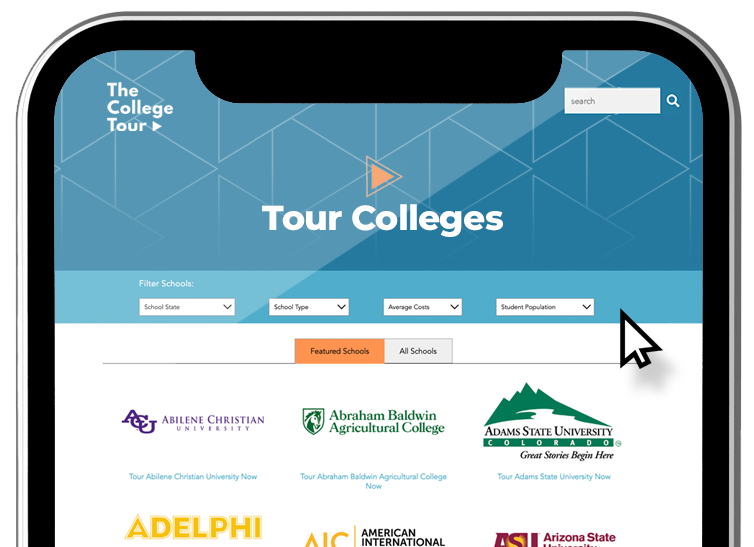
Our ‘Tour Now’ section takes the stress out of the college search. In one location, students can explore all 2,500 four-year colleges and universities and 900 community colleges throughout America. Easy-to-use, this platform allows you to filter choices by state, college type, and size, narrowing down the search based on your preferences.
Want to be featured on
The college tour.
Your institution can be featured on the hit TV series, The College Tour , streaming on Amazon Prime.
- Enter email... *
- Name * First Last
- Title * I am a... Student Parent College Professional Other
- Hidden utm_source
- Hidden utm_campaign
- Hidden utm_content
- Hidden utm_medium

Executive Officers
Find photos, biographies, and speech transcripts of Microsoft executives and board of directors members
Press Contact
WE Communications Microsoft Media Relations (425) 638-7777
Bill Gates: College Tour 2008
April 29, 2008
- Share on Facebook (opens new window)
- Share on LinkedIn (opens new window)
- Share on Twitter (opens new window)
Remarks by Bill Gates, Chairman, Microsoft College Tour 2008, University of Washington Seattle, April 25, 2008
MARK EMMERT: Good afternoon. (Applause.) Thank you. Good afternoon, and welcome to the University of Washington, I’m Mark Emmert, the president of the university, and I’m delighted to not only welcome you here to the campus, for those of you that are guests, but also to welcome you to the last stop on the Bill Gates Unplugged Tour. Bill has now been to five other universities, and spoken to packed houses, none of them as good looking as this crowd, though. (Applause.) None of them as smart as this crowd either, is that right, Ed? (Cheers and applause.) And we’re really pleased that he has saved the last and the best for the University of Washington in his backyard. This is obviously an audience that we don’t have to spend a lot of time introducing Bill to, but it is important to note that here’s an individual who has transformed, of course, information technology and the PC as we know it, and that in and of itself would have been a pretty remarkable accomplishment for anyone, but now he’s in the midst of transforming philanthropy, and global health, and education, and is likely to have that same kind of profound impact on the world yet again. And the man is younger than I am. So he’s just a child. So there’s much, much more to go, and we’ll see what Bill does for his third trick.
But the fact of the matter is, for the UW, there are few families and few individuals that are more important to us than the Gates family, not just Bill, of course, but his mother and his father, and his brothers brothers? his sisters. We’ve got with us today Bill Gates, Sr. Bill, will you please wave to the audience. (Applause.) Bill, as you know, is a regent of the university, as was Mary Gates, Mary for 18 years, I think, Bill, and now we have yet another regent that’s a Gates, and that’s Kristi Blake. Kristi, thank you for being with us. (Applause.) And now, without any further ado, it’s my great pleasure to introduce Bill Gates. Bill. (Cheers and applause.)
BILL GATES: Well, good afternoon. It’s fantastic to be here on the finale of my final Microsoft tour, and I mostly want to talk to you about the great things ahead. But first let me talk about the important relationship that I have with this university. As Mark said, it starts with my parents. They were students and met here. My sister was a student here. I was here a lot, but not as a student. I took an algebra course, that was good, but my main benefit from the university was that when computers were very expensive, hard to find, there was no such thing as a personal computer, the university campus was the best place to wander around and find unused computers. And so Paul Allen and I, particularly during a time when we didn’t have any computer work, and nobody was giving us free computer time, we found a number of machines, and were able to develop our skills during high school. The best one was one that was in the Physics Building, and they ran particles analysis runs most of the day, but they always had three or four hours at the end just in case the things ran long, and we would go up there, as soon as it was done, and grab that PDP-10. So we started stealing computer time, and now I’m giving it back from time to time. (Laughter.)
Also, of course, Microsoft has an amazing relationship with the University of Washington, where the commitment to long-term research at Microsoft has a lot in common with the great work going on at the university, particularly the computer science department, but also now that software is being applied in so many domains, and is really the tool for so many of the sciences, a lot of cutting edge software problems are coming out of the other departments, whether it’s genomics, or the environment, or anything related to biology, we need to solve some very, very interesting problems. So it’s fantastic to have the university here, and a lot of people have joint appointments where they’re involved in teaching, and involved in helping Microsoft do its work. So that has been an absolutely fantastic connection.
Also this university has become a very important partner of the Gates Foundation. The Gates Foundation has made more grants by a fair margin to this university than any other, and the interesting thing about that isn’t so much the size of those grants, but rather the kind of ambition behind them, work related to the AIDS vaccine, work related to malaria, work related to tracking healthcare approaches, and understanding where those are working, and where those are not, because, after all, a lot of things that seem like they’d work when we get out into these developing countries don’t, and making sure we guide that very well is important. So it’s a wide range of things, and I’m very optimistic that there will be big breakthroughs that come out of that work.
Microsoft, in a typical year, has about 100 people we hire from the University of Washington, which makes it the top place that we’ve gotten talent all the time. Ed Lazowska and I were talking today and saying, hey, we want that to be even more. So hopefully some of these dreams about software and the great impact it can have will make people realize that not only is this an interesting field, but really this next decade, the companies that take a long-term approach, are optimistic, hiring smart people, are really going to come up with some things that will be game changing.
For myself, I’m fairly near a transition point where I’ll move from being full-time at Microsoft, and doing part-time work on the Foundation goals to flipping that around where after the middle of the year I’ll be full-time on Foundation work, and part-time on Microsoft work. And I’ve been writing software as my full-time occupation for ever since I was 17. I had a couple of years where I was back at some other university, but that didn’t slow me down, I was still mostly writing software the whole time then. So it’s going to be an interesting change, you know, not to wake up in the morning and say, okay, let’s primarily focus on software. And some friends of mine were worried about that and thought we’ll maybe they could help me by putting together some thoughts about what my last day is going to be like. So we pulled together a video to help me with the transition. Let’s go ahead and take a look at that.
(Video segment and applause.)
We had a lot of fun making that. Actually, the transition is going great with incredible people like Ray Ozzie and Craig Mundie stepping up to do a lot of the things I’ve done, and free up my time for the new Foundation work that I’m thrilled that I’ll get to focus on. And we’ll have some Microsoft projects that I keep working on as I talk through some of the big opportunities, several of them are of particular interest to me, things like making search very different than it is today, and this whole area of natural interface.
So let’s talk about software and where it’s going. It has come a long ways since the advent of the personal computer. After all, software prior to that was used only by a few organizations with big expensive machines, and if anything they were viewed kind of as the enemy of the individual, they were printing out checks, and keeping databases. And so it’s almost a complete shift that computing has become the best tool for creativity and sharing that humans have ever had. What’s emerged around software and the Internet now is the facility that makes the world a smaller place, and it’s a fundamental element of the pace of innovation, and the efficiency that we have in the world today.
In fact, if you think about growing up when I grew up, it was a paper-based encyclopedia you went to for any question, and you got very limited data, it was always kind of out of date, and if you compare that today to any student who has access and the wealth of material that’s available to them from encyclopedias to discussion groups to models that will let them navigate through and try different things out, it’s a completely different world.
Now, at the center of that have been breakthroughs in both hardware and software. The incredible benefit of having exponential improvement at the chip level has allowed us to be more and more ambitious in software. The number of transistors has mapped to higher clock speeds, larger memories, and so-called “Moore’s Law” has really allowed us to build phenomenal machines.
Now, when Paul and I were young and started Microsoft we had in mind this idea that computing would be free, and so we let our minds wander to any type of computer that might be possible in the future. And even then we thought about some things that are not yet achieved, things like visual recognition, speech understanding, deep gathering of data, and machine learning that would relate to that. So in a sense we can say we’re only part way through achieving that original dream of software empowerment.
Another way that we can say we’re only part way there is just look at the population of the globe. Personal computing, mobile phones benefit less than a third of all people. There’s about a billion PCs, each of those gets used by multiple people. There’s about 2 billion mobile phones that are typically used only by one person. So we’re there in about a third, and two-thirds are not getting any direct benefit. But, the original slogan of Microsoft, going back to its earliest days, was a computer on every desk, and in every home, using powerful software.
So there’s a long way to go in terms of making it lower cost, and more relevant and far more practical. In fact, today we have laboratories, including some work here at our headquarters, and a particular group in India, that focus on really thinking about the poorest 2 billion, how can computing and technology make a difference for them. Often the answers are fairly surprising. The direct application isn’t as important as thinking through what it means for their health activities, or agricultural activities, or learning activities. And we need a lot of new ideas there to push these things forward. The impact of software has gotten broader and broader, but many of our common activities are not yet software-driven.
TV is still a broadcast medium. There’s not much software intermediation. There’s not software that’s picking what segment of the news show might be interesting to you, or letting you indicate, give me more about that story, or skip over this sport that I don’t particularly care about. The ads are not being targeted to things that might be of interest and value to you, which is a win-win, in terms of your interest and value to the advertiser. The game show doesn’t let you interact, the educational show doesn’t let you pause and get information about something that was covered too quickly. The sports show doesn’t let you get more information.
So we’re on the verge, in the same way that listening to music, or organizing photos has changed for a lot of people, the way TV is delivered is in the process of changing, but just at the beginning. There’s a million households in the United States today, primarily customers of AT&T, who are getting TV over the Internet. And as you get that scale, which has to get to critical mass, then the content creators are saying to themselves, okay, let’s do the extra work to take that show experience and make it far better, and take it genre by genre, and come up with new ways that the personalization and interactivity can work.
Today the world of video is bifurcated. The tail videos, the ones that are very popular, say, videos about your young kid’s sports activities, you’re not going to find those in the broadcast media. And so you go to your PC screen, navigate on the Internet to find those, and then that’s not part o the TV Guide that’s part of that living room 10-foot experience. But, we will have a complete synthesis of those things, where what you’re interested in will show up on all your devices, whether it’s your cell phone, your PC screen, or in the living room. So the tail video, the course that you wanted to watch and see the lectures that you happened to miss, those things will show up right there along with those mainstream things.
Today we don’t have robotics, it’s kind of a speculative field. Part of what’s missing there is a software revolution, so that the software so that the robot can gather information about its environment, whether it’s visual or audio, that planning type module, standard so all these different sensors can connect up, and we can experiment with robotics hardware without having to change the software base every time. So that’s an area where Microsoft and lots of startups and universities are investing. And I think that people are really underestimating over the course of a period like a decade how much things can change.
With technology we’ve always got that people tend to overestimate what can change in a year or two, and they underestimate the cumulative effect of change that can take place in a 10 or 15-year period. We’re also subject to cycles of over-optimism and pessimism. Certainly the late ’90s were kind of an insane period, where every startup was going to replace your bank, and your retail store, and people forgot that there are some benefits to experiences working those other ways, and the economic proposition that’s brought there. And in any medium where the barrier to entry is very low, the ability to build up an asset is all the more difficult. So only a few of those companies managed to get to the critical mass and do something interesting.
That was a fantastic thing, there was some crazy investment. It was like the gold rush. Some people did lose money, but that’s what capitalism is good at, taking lots of wild ideas and continuing to back the ones that work. So it was a period of, in the final analysis, quite a bit of innovation.
Then when that bubble burst some people went to the other extreme thinking that these changes were not really valid, that it had all been over-hyped. But, it was only over-hyped in the sense of the time frame. Some of the things were not thought through. Some of the technical foundations were not there yet.
Take something that I’ve been a big believer in, and gotten Microsoft to invest in, and I still totally believe in, things like the Tablet computer, where you can take notes and do your reading off of the screen, that takes a certain level of hardware and software, usability, price, size, battery life, and what that magic threshold is that makes that a mainstream thing, where business people going to meetings take it with them, students going to classes, say, of course, I take notes this way, share things this way, we’re not quite there yet. We’re there in certain verticals, the medical market with doctors, insurance market with claim writers. So that’s getting us down that learning curve, making the software and hardware better all the time.
Now, when that comes to fruition, when it really is at critical mass, it starts to have a big effect on reading, where you’ll be reading things more online. We’re seeing Amazon with the Kindle, Sony with the Ebook, Microsoft with software that runs on the portable machine, doing early stages of that. And even though in the next two years you can’t say it will change, but certainly in this 5 to 10-year period that will be very, very different. And we can think about students working that way.
My daughter goes to a school that all the kids use tablet computers, and it’s fascinating to see how the curriculum has changed, but when you really think, not just about putting the normal curriculum there, but when you think about taking advantage of that tool, how fantastic it is. It also facilitates sharing information. The teacher can mail out the test results to the parents, so you go home at night, and whether your daughter wants you to know or not, you know exactly how she did on those fractions. So you volunteer to help no matter what.
So there are some big, big changes that are about to come about. I think one of the most important ones, and this is an area of a lot of great work going on at Microsoft, and at the University of Washington, is the way we interface with these devices. If you look at this last 30 years or so there have been very few changes. We’ve gone from a keyboard, to a keyboard and a mouse fundamentally, 90 percent of the interaction with the machine is driven that way.
That’s not going to go away, for creating the documents, sitting in a solo basis, and reading things, navigating things, there’s a certain utility and efficiency of that that will probably always be justified. But, for the first time we’re starting to see, whether it’s the Nintendo Wii with the 3D controller, or the iPhone with its touch capability, or the Microsoft Surface, where it sees what’s going on, objects, and any sort of interaction that you want to have take place, or vision-type capabilities in a broader sense, that this idea of the computer knowing what’s going on, knowing more than just how you move the mouse, or hit the keyboard, that that really is bringing computing into new experiences.
It was just a few weeks ago that we rolled out Surface into retail stores. They were actually AT&T phones stores where people could come in, put their current phone down, put a phone they were considering buying, and see a comparison, what things were different, what things were better. They could look at the different plans, and try those things out. They could look on the phone and see the different places they go to, it would show them the different coverage capabilities that they had for those things. And so you’re starting to see what that will be like.
We actually think it’s time to amend our slogan of a computer on every desk, because with this kind of technology we want to put a computer in every desk. We want the desktop, or tabletop, we want the whiteboard to be something that’s completely intelligent. As the price of the hardware comes down, even something like a mirror will change to be essentially a screen with a camera. Sure, some of the time you want to see what you really look like, but some of the time you’d like to see what you’d look like wearing something different, or have it maybe point out something that you missed, or show you extra information. So you can create a very pervasive sense of computing.
Part of this will be having screens anywhere. Even the mobile phone itself will have this ability to project onto a large surface area. So if you want to read lots of information, yes, the mobile phone can connect through Bluetooth, or some other means, to another computing device, but it can also simply have projection capability, these laser displays, and some of these different ways the screen hardware works, it not just going to bring us high resolution, it’s going to bring us screens that are on all the walls, the ceilings, different places. So when a kid thinks about their bedroom it will be customized the way they want it, until the parent walks in, when immediately it will be customized a different way, so that everybody stays happy.
Now, part of the things that drives computer science forward is doing risky things, having a long-term time horizon. And when Microsoft was a small company we benefited form the fact that AT&T and Xerox, and other companies had made investments in research, that they’d reached out and worked with universities on a broad basis. So we felt very lucky that as we got to a certain level of success we could start our own research group, and have that research group be in partnership with top universities all over the world, doing advanced programs, things that range from the work on speech recognition, all the way up to quantum computing. We have a fairly serious program that has a high risk of failure, which makes it fun and interesting, on quantum computing. Even in the best case it’s probably a decade away before that makes a difference, but that’s the kind of thing that when it worked can have incredibly high pay-off.
It’s surprising to me how low the levels of real research investment by businesses are. We’re certainly always trying to get the message out that more businesses should do these things. It’s unfortunate that AT&T did it almost because of their regulated nature, and a lot of it wasn’t directly related to the business. So they’re not, in a certain sense, a role model, it’s kind of a unique thing that happened, and those unique circumstances are gone.
Likewise, Xerox, anyone who has been in the computer industry for a while thinks of that as an interesting example, where they for that period of time had a greater concentration of IQ in one place than anyone did, and came up with ethernet, laser printing, graphics user interface, the early stages of these things that were later refined. But, the basic ideas came together there. Yet, Xerox managed to not get any benefit out of it. In fact, they lost a lot of money.
There’s a lot of people who have tried to analyze that. There’s a book called Fumbling the Future, and Microsoft soon after PARC the research center that did that work kind of fell apart, we had more Xerox PARC people working for us than Xerox did. So we owe them a particular debt of gratitude, not only in terms of their work, but amazing people from Butler Lampson, Chuck Thacker, anyway, just an incredible group who not only do amazing work, but also have nurtured the next generation of brilliant people coming in, and taking on very ambitious challenges.
I mentioned that there’s a lot of good collaboration between Microsoft and UW, the Center for Collaboration Technologies is a place we’re very excited about the work, and we’ve been backing that in a number of ways. Analyzing photos, that we call Photosynth, the University of Washington did some key work on that. I think people will be amazed that you will be able to take just simple 2D photos from, say, a cell phone or a camera, and software will be able to figure out where that is, and connect it up with other photos. And so you’ll be able to synthetically, essentially get a sense of all the things going on in the world in different places, and you can even create full 3-D models out of these fairly low-resolution 2-D photos.
I remember five years ago people thought that was absolutely impossible, and yet there’s been breakthroughs in terms of these algorithms involved, to not only make it possible, but to make it practical. The breakthroughs in efficiency, along with brute force computing, are combining in a pretty magic way.
We’re getting immense amounts of data, and one of the projects I think is very cool that Professor Lazowska and someone in his lab, Keith Grochow, are working on is this Trident, which is a lot of marine biology undersea information. We really don’t know what we’re going to learn from that, but it is state of the art, in terms of what sort of visualization, data collection, pattern analysis that needs to get done. And so it’s fun for software people to have things like that, where it’s interesting, practical data, and yet we have to make advances, interaction techniques, and how we look at data in a rich way.
I have one good example of that, that I want to show you. And this is kind of a new thing. I’ve never demoed it before. So we’ll see how this goes. Let’s see. So this this is the Worldwide Telescope, and this is Curtis Wong at Microsoft Research, along with some people working with him came up with this idea of taking astronomy data and making it widely available.
It actually started with Jim Gray who was in our research lab, who thought that all those databases were not pulled together. And he worked with some astronomers who needed data from different databases to try out different ideas, to test their model of the universe. And so the idea of having a schema, and a taxonomy, and taking things done at different times, different wavelengths, and pulling that together was done for the scientist to advance their work, and what’s been done here is to actually take that data and say, okay, how do we take that and connect it up in a way that can make astronomy interesting for anybody who wants to learn about it, to make it absolutely approachable in a very rich way.
So you start out, you’ve got a vision of the sky here, and this is a pretty neat application. That’s the sky. First let’s go to something that’s familiar for you, just go in and we’ll find Jupiter out in the sky. So there’s Jupiter. We can zoom in, zoom out, and that. You actually see these dots here, those are the moons of Jupiter that when this image was taken, that’s exactly where they were, and what it’s doing is, it’s showing Jupiter as it is in the sky right now. So we can go anywhere in the sky that we want. Let’s pick Cygnus, which will let us illustrate some very interesting things. So this is data that’s been collected from many, many, many different telescopes, the Hubble, the Sky Survey, literally hundreds of different things have been used to pull this together. So here we are at Cygnus. So I can go in and look at that. Okay, so let’s look at this in different ways. To start out with, we’re in the visible wavelength. Now we’re seeing hydrogen alpha, we can see dust map. One that’s particularly interesting is to look at this in the X-ray, because if you look in X-rays you can see where there were supernovas. There’s always an echo left over after that supernova. So we see this big thing down here. We can go in and zoom in on that a little bit, and say, okay, that’s interesting. Well, what does that look like if we just look at it in the visual wavelength. We can see, okay, there’s what the dust cloud looks like from a supernova that this is actually five thousand years ago, but if I go back here, I can say, okay, it shows up in the X-ray, but not quite the same way in that different wavelength. So we can try out different things to see what patterns different types of phenomena are going to create there.
Let’s go do something else. Let’s see. Let’s go over to Crab Nebula. You can see it actually navigates the sky, kind of gives you a sense of where you’re going. You can go straight there, if you want, but I always think it’s interesting to see what the relative positions of these things are. So that’s the Crab Nebula in the visual range. And so, here again it is in the X-ray, there’s in the IR, and these things are registered on top of each other. You see we’re not moving at all because these databases have been correlated in a way that it’s all in that same location.
So far what I’ve shown you is how I’m guiding things around myself. Another thing you can do is go out and look into databases about this information. So I can just right click something, and it will show me all the different things on the Web that might be interesting about that information, anything that I want to point to here. We also have what are called guided tours where instead of going around yourself, somebody can record the things that they’ve done, and they can have voiceovers. We make it very easy for them to build those things. This is one that Alyssa Goodman did. She’s at Harvard.
(Video segment.)
I can pause at any time, and look at the images in different ways, and go back into the tour, or, again, I can go right click and see this is a spiral galaxy, and again go out and get any data that’s out there on the Web. To give you a sense of how easy it is to make these guided tours, let’s go in and see one that was created literally by a six-year-old about the Ring Nebula, where he’s able to share his fascinating to using this Worldwide Telescope, and share that with other students.
Anyway, it gives you a quick glance at this Worldwide Telescope. I think it illustrates a lot of things. We’ve got a lot of data out there, and with the right software we can make it approachable and understandable. And, in fact, in the next month or so, this will go up for free at www.worldwidetelescope.com and just be a piece of software that any teacher or student can use, and we’ll be collecting the really good tours that people create, and have those just show up in the catalogue so that over time people get better at making that a subject that’s fun and approachable using the magic of software and the rich data that’s available.
Now making sure that this innovation is going ahead at full speed, and we want to enable people of all ages, we want students to have access, we want them to have the latest and greatest tools, many of the breakthroughs have been made by people that are very young. Microsoft has a lot of things, one is called DreamSpark, which is where we made all our development tools free to students now where they can try things out. And we’ve also created a lot of online essentially TV channels, but of course very interactive, one we call Channel 8 that has all the information, programming courses, advice, sample code, and really putting a big investment in that to make sure that anyone who can get to the Internet can polish up their skills, see what good code looks like, and really pursue their ideas, whether it’s about software itself or rather they have an idea about another field, one of the sciences, or any idea, and actually you’re using software merely as a tool to understand those things, and encode the algorithm that they have.
Now when we look at this very optimistic view, which I think is a totally valid view, one lens that it is important that we continue to apply to it is to say, okay, with all these advances, the breakthroughs in software, and the tools that make TV more fun, and mobile phones more fun, so you’re talking to them, and you can share with your friends where you are, how do we take these breakthroughs of all the sciences, particularly including medicine, and make them available to everyone?
After all, there’s sort of a natural thing that can prevent that from happening if we’re not careful, which is the interest and needs of the richest have the most powerful voice in the marketplace. And so you’ll see disparities that take place where medical conditions like malaria or an AIDS vaccine receive substantially less focus than something like baldness or erectile dysfunction. In fact, you have a pretty significant ratio in those things, and it’s not that the company’s involved are doing something wrong, it’s that there isn’t a mechanism that outside sends that message that those things are worth working on.
The same thing is true specifically in computing. How should we get computers out to people on a very broad basis? There was a joint project between the Foundation and Microsoft to get computers into libraries. That was done in the United States about 60,000 computers were put into 18,000 libraries. And it was a huge success. It was particularly transformative in rural areas where people didn’t have broadband access, and they weren’t as likely to be able to afford the computer on their own. First the librarians were a little worried, would kids still come and get books, would the machines work well, and there was a lot of learning that took place. But in the end, it was phenomenally successful. In fact, the number of books being checked out went out as more traffic was coming to the library. And kids didn’t just play games, they did things that were interesting and valuable. And a lot of adults came in to learn new skills, to stay in touch with relatives, to understand about health conditions, and it’s been phenomenal to track that. That’s now been taken to a number of countries, Mexico, Chile, Botswana, Lithuania, there’s another six countries that we’re in the process of doing the pilots, and doing the rollouts to take this idea that in the same sense that libraries were deemed to be something everybody should get to, because literacy should be available to all, now this access to computing, and software, and the Internet, and the things it makes available, we should push on for that same type of accessibility.
In fact, we looked across many areas of activity, banking, the ability to have a savings account. The poor need that in particular. The ability to get loans. And it is interesting to think how we could draw in some of the large successful companies into helping out with these things. It’s an area that I’ve used the phrase creative capitalism to describe that and, in fact, if you just took the best practices of the leading companies, and had the average company doing as well, I think that this gap between how quickly and how well we map technologies into the needs of the most needy, of the poorest, would change very, very dramatically. And so that’s certainly a topic that I’ll be putting a lot of time into, and sitting down with companies, talking to them, creating awards, creating positive feedback for the ones that do it, maybe somebody will figure out how to get negative feedback for the ones who don’t do it, and creating hopefully some real momentum behind that.
So, you know, I’m very optimistic about software. I can’t imagine why software is not the most overcrowded field in the world. What could be more interesting than working on these tough problems, and being able to have this kind of impact to build magic new devices? And, in fact, what I and my generation got to do these last 30 years really pales in comparison to what you’ll be able to do in the next 30 years ahead.
Thank you. (Applause.)
- Check us out on RSS
Share this page:


IMAGES
VIDEO
COMMENTS
On Monday, recently retired Microsoft Chair Bill Gates embarked on a three-state college tour. Gates kicked off his trip at the University of California-Berkeley, where he spoke on the necessity of youth involvement in crucial issues facing the world.
Retired Microsoft chair Bill Gates embarked on a three-state college tour, where he spoke on the necessity of youth involvement in crucial issues facing the ...
Bill Gates kicks off college tour Speaking at the University of California at Berkeley, the philanthropist and Microsoft Chairman encourages students to get involved in society's big issues.
Bill Gates kicks off college tour Speaking at the University of California at Berkeley, the philanthropist and Microsoft chairman encourages students to get involved in society's big issues.
Microsoft Chairman Bill Gates announces Microsoft DreamSpark student program to students and faculty at Stanford University in Palo Alto, Calif., Feb. 19, 2008. Let me talk now about what I think software will do in the decades ahead. Certainly if you go back to the start of Microsoft, nobody thought of software as being important at all.
Remarks by Bill Gates, Chairman, Microsoft College Tour 2008, University of Washington Seattle, April 25, 2008. ... but also to welcome you to the last stop on the Bill Gates Unplugged Tour. Bill has now been to five other universities, and spoken to packed houses, none of them as good looking as this crowd, though. (Applause.)
From time to time I visit college campuses to talk with students and faculty about using their education and research to tackle some of the world's biggest challenges. Watch my talk and Q&A session with students and faculty at Harvey Mudd College and Pomona College.
Multi-billionaire Bill Gates has come out of his underground lair across the lake from Seattle to go on a three-city speaking swing focused at college students. Monday he kicked off the tour with ...
A tour of five U.S. colleges gave Bill Gates the opportunity to chat with students about world challenges like poverty, global health and education. ... You can also learn more by checking out the college tour section of the foundation's Facebook page.
Bill Gates' Legacy at Harvard University. Gates enrolled at Harvard in the fall of 1973 as a pre-law student, though he loaded up on mathematics and graduate-level computer science courses. He quickly gained academic accolades at the acclaimed university when he developed an algorithm to address an unsolved problem posed by Professor Harry ...
Gates' visit was part of a three-day tour of five universities that was intended to inspire students and faculty to focus on issues of inequity. Although he had completed similar college visits while at Microsoft, this trip marked Gates' first college tour since he assumed full-time duties at the Bill & Melinda Gates Foundation nearly two years ...
Kicking off a three-state tour of five college campuses, Bill Gates encouraged students at the University of California, Berkeley to get involved in efforts that can change the world, CNET reports.. In his talk, the Microsoft chairman and co-founder of the Bill & Melinda Gates Foundation said that, with their youthful idealism and open minds, college students represent an important opportunity ...
Early Life and Education. Bill Gates, born William Henry Gates III on October 28, 1955, in Seattle, Washington, exhibited a precocious intellect from an early age. Raised in a supportive family environment, Gates attended Lakeside School, a private preparatory school known for its rigorous academic curriculum. During his time at Lakeside, Gates ...
Bill Gates (born October 28, 1955, Seattle, Washington, U.S.) is an American computer programmer and entrepreneur who cofounded Microsoft Corporation, the world's largest personal-computer software company.. Gates wrote his first software program at the age of 13. In high school he helped form a group of programmers who computerized their school's payroll system and founded Traf-O-Data, a ...
Retired Microsoft chair Bill Gates embarked on a three-state college tour, where he spoke on the necessity of youth involvement in crucial issues facing the ...
Bill Gates is getting ready to kick off a 3-state speaking tour
The Gates Foundation's Horizons program is supporting four partnerships that are ready to expand programs to help more students design the future they want. Students from across Washington state tour the Discovery Center during a convening at the Bill and Melinda Gates Foundation in Seattle. Nearly 90% of students in Washington state say they ...
Bill Gates vertelt over de Bill Gates Foundation in het programma College Tour, gepresenteerd door Twan Huijs.
College Tour is a TV-show in the Netherlands, that interviews the most high-profile Dutch and international guests. Inspired by town hall meetings during United States elections, the majority of questions are asked by the audience. The show is hosted by news anchor Twan Huys, who conceived its format while working as U.S. correspondent in New York and Washington D.C. from 1999-2007.
Visit Carnegie Mellon University. Take an in-person tour led by our Tartan Ambassadors, a self-guided outdoor tour, or a virtual tour of our growing urban campus, nestled in one of Pittsburgh's oldest neighborhoods.Hear current students share their campus experiences with academics, student life and traditions like The Fence and Carnival.
Vrijdag 14 november is Bill Gates te gast in College Tour om 20:25 op NPO 3! ...
Our 'Tour Now' section takes the stress out of the college search. In one location, students can explore all 2,500 four-year colleges and universities and 900 community colleges throughout America. Easy-to-use, this platform allows you to filter choices by state, college type, and size, narrowing down the search based on your preferences.
Remarks by Bill Gates, Chairman, Microsoft College Tour 2008, University of Washington Seattle, April 25, 2008. ... but also to welcome you to the last stop on the Bill Gates Unplugged Tour. Bill has now been to five other universities, and spoken to packed houses, none of them as good looking as this crowd, though. (Applause.)